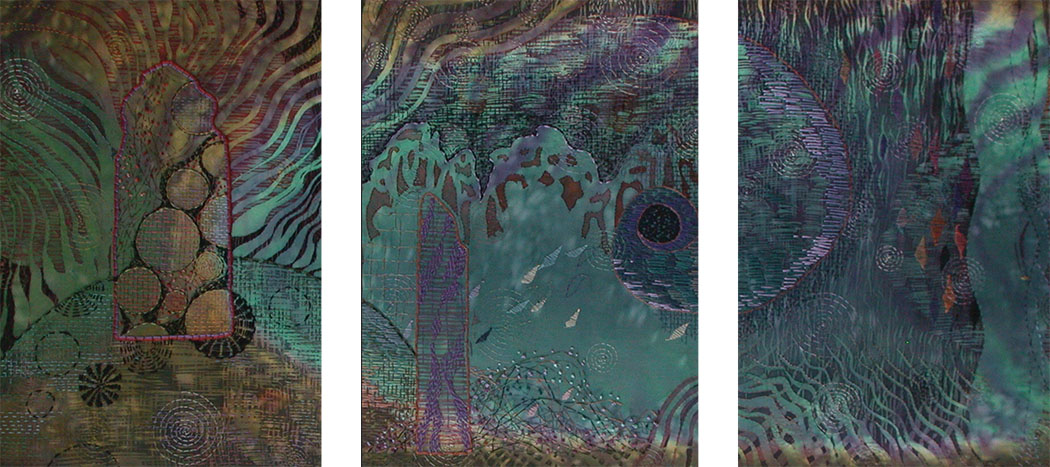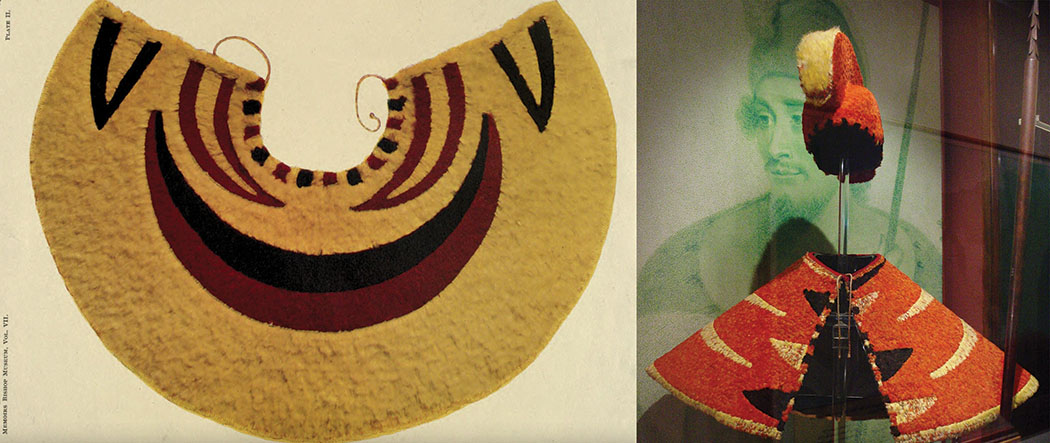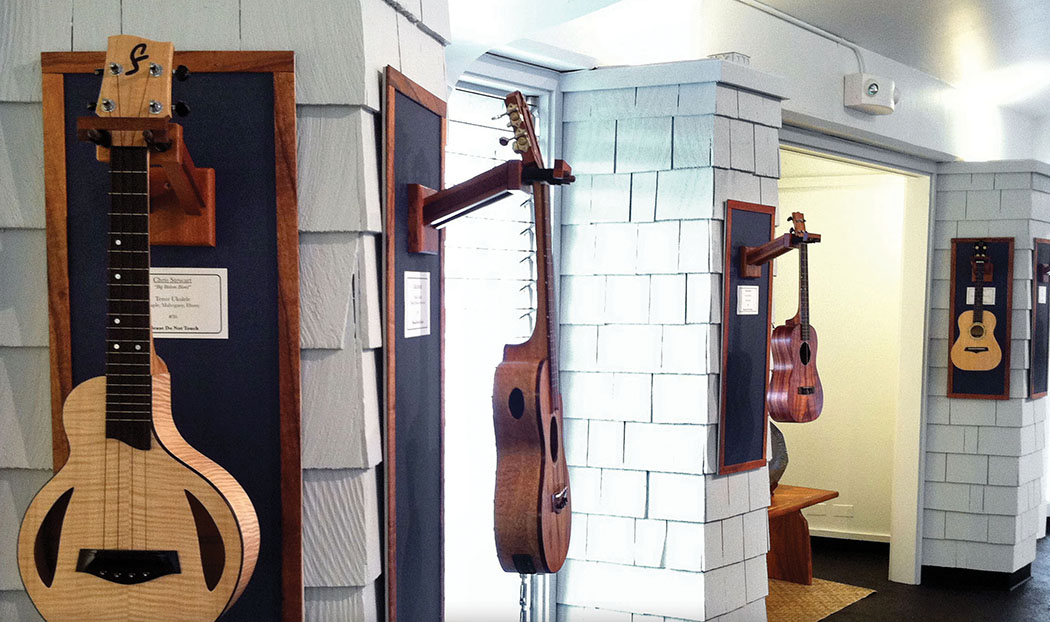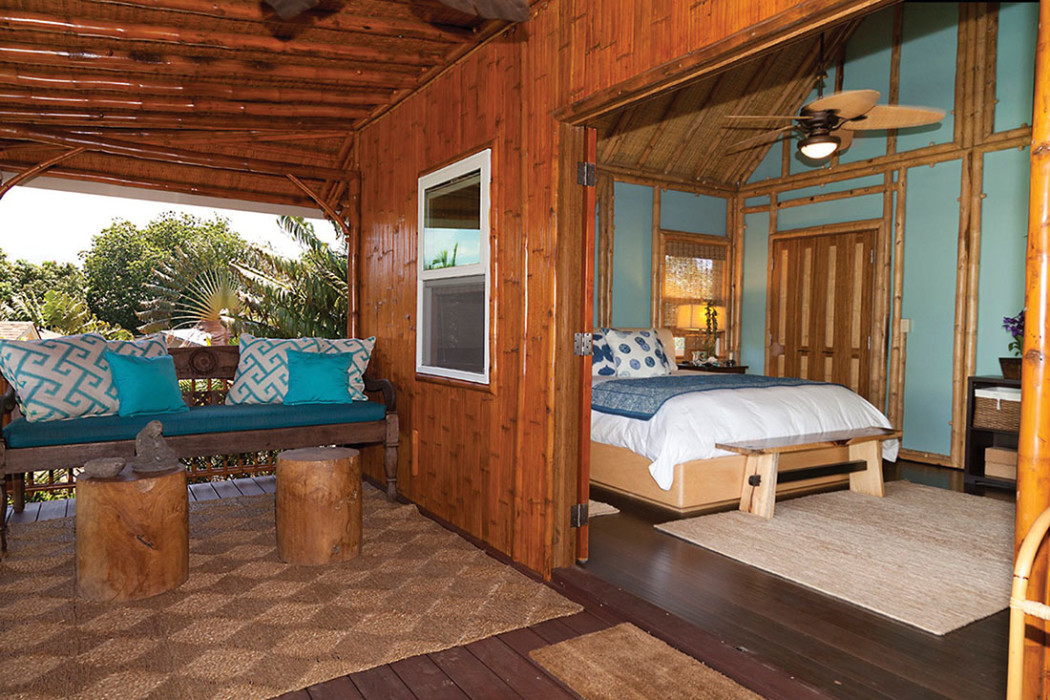
Vegetable Steel! Miracle Grass!
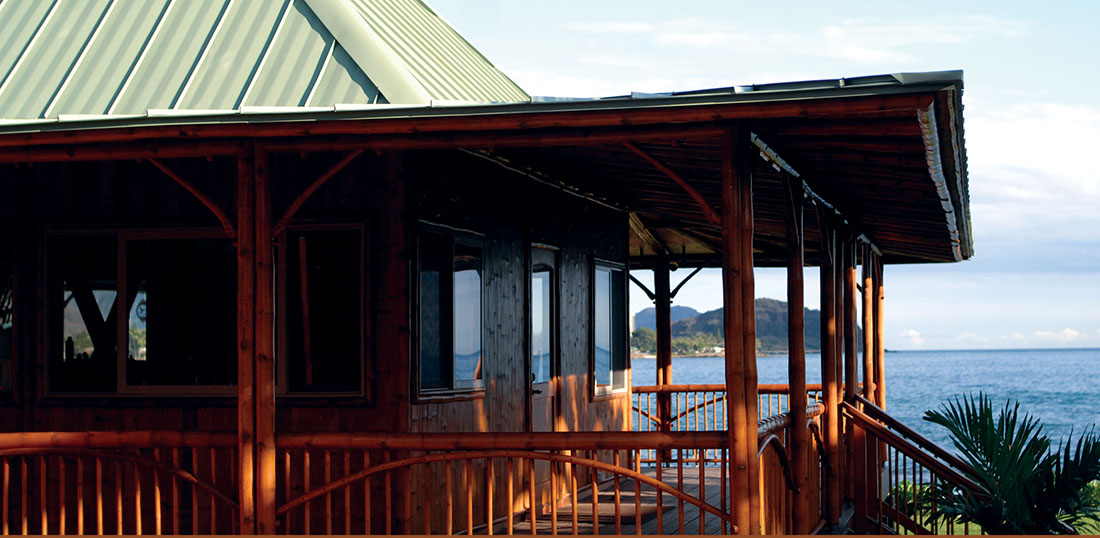 By John J. Boyle
By John J. Boyle
I awake in the ‘ohana to cooing doves in an octagonal room in the low jungle of Kapoho, smiling about how warmly organic the structure is, how much like a finely worked piece of furniture and how immediately complementary it is to the ōhi‘a and papaya out the windows. Bamboo embraces painted sage walls between the many windows that invite the sunrise to fill the round bowl of a ceiling in my room of healthy overhead for dreams and the feeling of being embraced rather than shunted in bed. I feel like I am a seeded moment, and it is a really good thing.
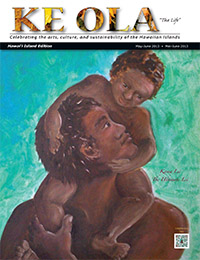
Surrounded with bamboo in its umpteen forms from flooring to trim, and also in the furniture and interior doors, this wonderful magical grass so gracefully obviates wood. Where wood was once an exclusive domain in construction, bamboo has risen to the need and is now machined into planking, veneers and woven in traditional and exciting new ways, which is why I came to meet with architect David Sands and talk about his work.
David lives in his own work. Amongst a clutch of aficionados and a forested jungle of organic farmers, it makes a certain kind of sense. In beauty and grace, bamboo does not compete with the wilds of Puna; it compliments it. With a characteristic golden honey hued finish and hand worked nodes, the building has a soft, nurtured, and comfortable feel.
Bamboo Living has graced the plains of Puna since 2011 when David Sands transported his center of operations from Pā‘ia Maui where it all began almost 20 years ago as a dream of necessity, and he worked out a solution that is now gracking all the Hawaiian islands.
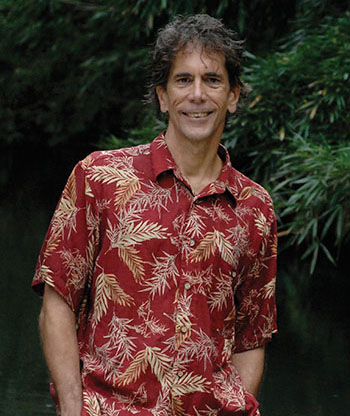
While studying art and architecture, early on David was inspired and impressed with Asian designs, which led him to Taiwan and the study of Chinese brush painting—the art of rendering lines with hand ground ink. Often the brushes were of bamboo handles with horse or sable hair. This classical study embraces what is called the “Four Gentleman” or “Four Nobles,” which refers to mastering the images of chrysanthemum, plum, orchid, and bamboo. It was while learning an ancient art that he began to see inside the bamboo. Bamboo continues to hold its place in art, architecture, and now is moving into the world of sustainable housing construction materials.
Perhaps David Sands signature achievement is how he learned to bend and grow in his persistence in his pursuit of a building code approved building consisting of bamboo. The research and development took him a decade and consisted of trials and tests amounting to a small tree’s worth of paperwork.
“I developed patience and the willingness to do what is asked,” he said about passing paper to see it through the many processes of approval to certification.
In 1994 he met the Irish visionary artist Linda Garland in Bali after seeing her homes in Architectural Digest. He describes her home as “outrageously gorgeous,” and they became friends and colleagues in a long process of bringing a vision to the American landscape. Garland is a sculptor and furniture maker who embraced Bali’s immemorial building material that culminated in her estate, Nyu Kuning in mountains of Ubud. With Columbian architect Simón Vélez, worldly bamboo re-entered western consciousness by way of international conventions of builders with whom he shared his huge pavilions and a burgeoning technology. He calls it “high tech from nature.” As an inspired and self-funded venture, Sands’ vision of sustainable bamboo structures has come true for Hawai‘i and the rest of the world via INBAR and the International Code Council (ICC), which writes the building codes for nearly all of the US.
 The International Network for Bamboo and Rattan (INBAR) is an intergovernmental organization dedicated to improving the livelihoods of the poor producers and users of bamboo and rattan, within the context of a sustainable natural environment. INBAR connects a global network of partners from the government, private and non-profit sectors in over 50 countries. INBAR promotes sustainable development with bamboo and rattan by consolidating, coordinating and supporting strategic and adaptive research and development. Thanks to David’s work with INBAR and ICC, there now is a bamboo house building code that is approved throughout the whole country, which has, in a word, opened the door for other alternative and sustainable technologies to follow.
The International Network for Bamboo and Rattan (INBAR) is an intergovernmental organization dedicated to improving the livelihoods of the poor producers and users of bamboo and rattan, within the context of a sustainable natural environment. INBAR connects a global network of partners from the government, private and non-profit sectors in over 50 countries. INBAR promotes sustainable development with bamboo and rattan by consolidating, coordinating and supporting strategic and adaptive research and development. Thanks to David’s work with INBAR and ICC, there now is a bamboo house building code that is approved throughout the whole country, which has, in a word, opened the door for other alternative and sustainable technologies to follow.
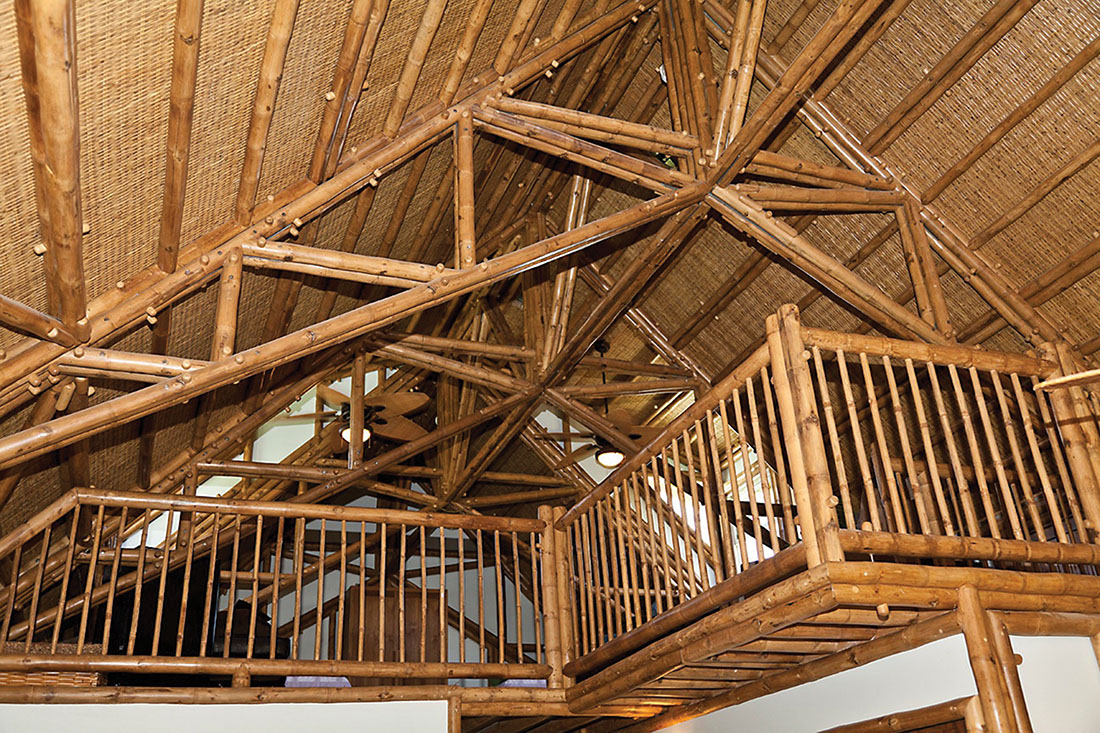 Many of us recognize it in cutting blocks, chopsticks, and flooring, however bamboo is a truly brilliant world class plant with more than 1200 species: it can be food, shade, windbreak, erosion prevention, or a musical instrument and it is now being compressed into some construction material available. As is wood, plastic, and metals, bamboo is strong in it’s ability to retain structure and withstand hurricanes and earthquakes precisely because it can bend—an admirable quality. For national building codes, our sensibilities of wood, steel and concrete-centric approaches bend to the introduction and remembrance of beautiful bamboo.
Many of us recognize it in cutting blocks, chopsticks, and flooring, however bamboo is a truly brilliant world class plant with more than 1200 species: it can be food, shade, windbreak, erosion prevention, or a musical instrument and it is now being compressed into some construction material available. As is wood, plastic, and metals, bamboo is strong in it’s ability to retain structure and withstand hurricanes and earthquakes precisely because it can bend—an admirable quality. For national building codes, our sensibilities of wood, steel and concrete-centric approaches bend to the introduction and remembrance of beautiful bamboo.
The poet Basho wrote, “Go to the pine if you want to learn about pine, or to the bamboo if you want to learn about bamboo. And in doing so, you must leave your subjective preoccupation with yourself.”
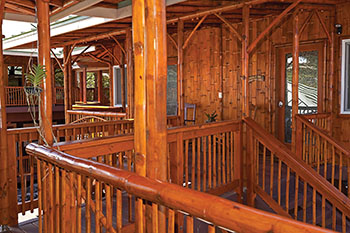 David and his founding partner Jeff Trudeau had a vision that first came to fruition in 1995 with their first constructed home in Maui. Together they developed the processes of testing to determine strength of material, resistance to sun, wind, rain, and infestation with good results: they augmented an already beautiful plant with some stamps and nods. Boron, a naturally occurring mineral, was found to properly protect the bamboo in the form of borate. Years of development and communication globally have helped the team with a first off introduction with certifiably conclusive results. The decision to move to Hawai‘i Island was based on the number of homes going up on our island, now more than 30, with 150 throughout the state.
David and his founding partner Jeff Trudeau had a vision that first came to fruition in 1995 with their first constructed home in Maui. Together they developed the processes of testing to determine strength of material, resistance to sun, wind, rain, and infestation with good results: they augmented an already beautiful plant with some stamps and nods. Boron, a naturally occurring mineral, was found to properly protect the bamboo in the form of borate. Years of development and communication globally have helped the team with a first off introduction with certifiably conclusive results. The decision to move to Hawai‘i Island was based on the number of homes going up on our island, now more than 30, with 150 throughout the state.
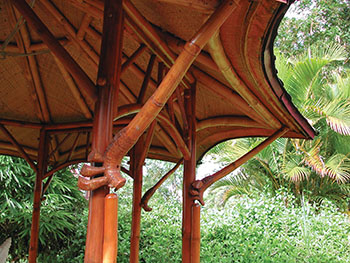 In a world of planned obsolescence, bamboo is alone as a building material that redeems itself faster than it can be eaten by weather and time. It grows quickest as a forest commodity as a pulp, paper, or food. Unlike foresting trees, bamboo can be harvested as mature in three to five years, while not killing the plant. Bamboo is known as a carbon sink, since it absorbs more carbon than it releases, making it more than sustainable, and in its short lifetime to maturity, it constantly improves the environment.
In a world of planned obsolescence, bamboo is alone as a building material that redeems itself faster than it can be eaten by weather and time. It grows quickest as a forest commodity as a pulp, paper, or food. Unlike foresting trees, bamboo can be harvested as mature in three to five years, while not killing the plant. Bamboo is known as a carbon sink, since it absorbs more carbon than it releases, making it more than sustainable, and in its short lifetime to maturity, it constantly improves the environment.
When pressed and joined with galvanized hangers and brackets, bamboo becomes treated as a wood. In an organic swaying and bending world, David Sands’ designs are a coup de grace to wood mills and clearcutting. Bamboo is a beautiful building material that continues to suggest uses and designs when juxtaposed with other elegant materials like rock, cloth, paper, and glass. A grass that is hollow yet strong, bamboo is resilient in its shakuhachi and gamelan organic brilliance. Moreover, it behaves well, holds a straight line, or assumes a curve, and honors a finish. Warm underfoot and cool too, the invisible porosity accommodates many climates, breathes instead of sweats, and somehow speaks something to everyone it meets.
Meeting the Spirit of Bamboo

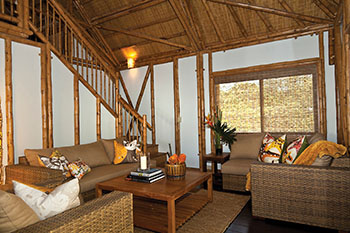 I had first met David on Maui in 1991 and immediately appreciated his clean vision and Wabi Sabi smile. We were on the same sustainable page of pulp: eco builder, writer. I had just arrived in the land of bamboo from the east coast. So naively, I was hacking the bamboo, boring it, burning it, and enjoying how it was between a tent pole and a small tree. For fun, I improvised structures, musical instruments, a bird feeder, and planters. Since then, bamboo has become a companion, showing up in random circumstances, for its availability and immediate lengthy strength in providing many quickly assembled coverings. With zip ties, geared hose clamps, hole saws, a sander, and drills, bamboo can be made to assume most if not all building timber properties. Our technology seems to have caught up with our resources, just in the nick on a node of time. Since then, I have seen bamboo scaffolding building skyscrapers in Hong Kong, sake decanters in Japan, and comfortably at home on Hawai‘i Island.
I had first met David on Maui in 1991 and immediately appreciated his clean vision and Wabi Sabi smile. We were on the same sustainable page of pulp: eco builder, writer. I had just arrived in the land of bamboo from the east coast. So naively, I was hacking the bamboo, boring it, burning it, and enjoying how it was between a tent pole and a small tree. For fun, I improvised structures, musical instruments, a bird feeder, and planters. Since then, bamboo has become a companion, showing up in random circumstances, for its availability and immediate lengthy strength in providing many quickly assembled coverings. With zip ties, geared hose clamps, hole saws, a sander, and drills, bamboo can be made to assume most if not all building timber properties. Our technology seems to have caught up with our resources, just in the nick on a node of time. Since then, I have seen bamboo scaffolding building skyscrapers in Hong Kong, sake decanters in Japan, and comfortably at home on Hawai‘i Island.
Bamboo Living’s technology leads to more and greater developments in materials cured for construction. The simple elegance of predictably repeating patterns of lines is a comfort. No one part seems precarious or fragile: it feels like a considerably solid support. Natural colors like honey, chocolate, gold and sepia, all feel like old friends, like wood only different; it is a grass that has a strength like steel.
Clean, Green, Sustainable
The challenge in transforming the material is that like wood, bamboo must be protected from insects. Through many years of testing, engineers have found a compliment in treating with borate, boron as a chemical additive that bugs resist, fires resist, and augments the environment. Boron is an essential micronutrient for growth and development of healthy plants. In small concentrations, boron compounds are used as micronutrients in fertilizers. In large concentrations, they are used as herbicides, algaecides and other pesticides. A naturally occurring element, familiar to us as Borax, boron is essential for maintaining a balance between sugar and starch and functions in the translocation of sugar and carbohydrates that are important in pollination and seed production.
In many ways, one of the many beauties of Hawai‘i Island is its seat as primogeniture on a great number of discoveries. There are things that happen here like nowhere else on earth. Since the quick and dirty exit of sugar cane, bamboo farming would provide a viable alternative commodity.
The ease of David’s design meets our similarly joined bodies, and we like it for both its familiarity and its originality as it surprises our sense of structure. It’s like when the tree house worked because it was all about the tree or when the corners disappear and easy rounds breathe. As a woody thing in the west, it shows up with high ranks having done time in salad bowls, chopsticks, furniture and floors and has begun to find its place as both manufactured composite and trim. In many ways, the technology of bamboo is eased into another millennia, with grace, promise and aplomb in short and in long. It works.
When under a woven and carefully organized roof, overlooking south Puna sunrise, bamboo is a beautiful object de vertu to wake within, the simple warm colors feel like being outdoors, under a tree or yet in a tree that is not a tree but an abundant species of grass. ❖
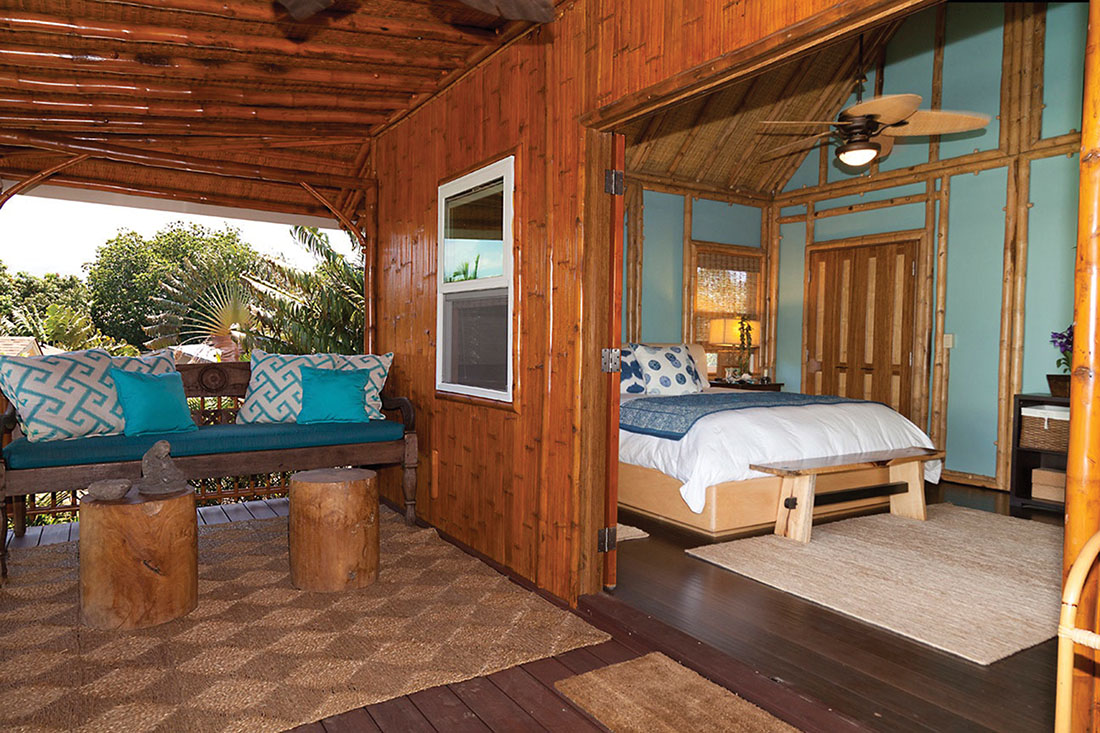
For more infomation: BambooLiving.com
Contact writer John J. Boyle: jjjboyle2112@gmail.com
